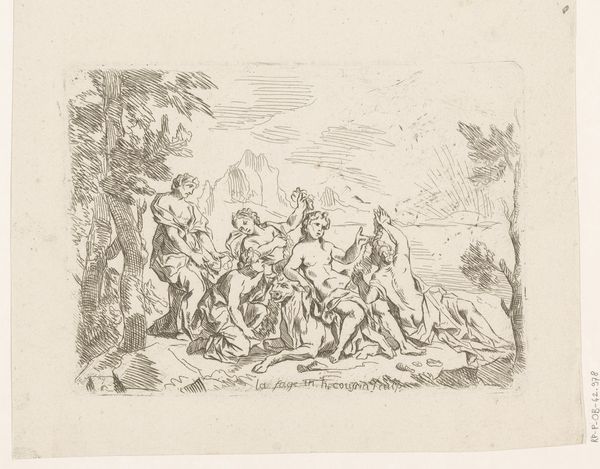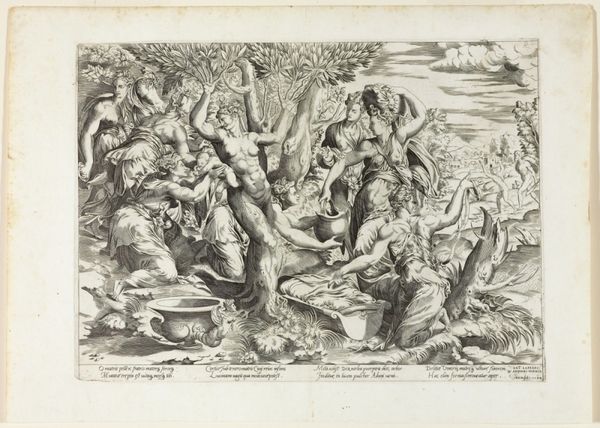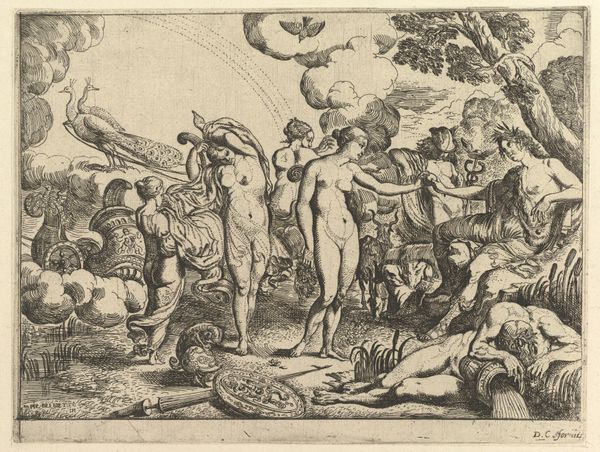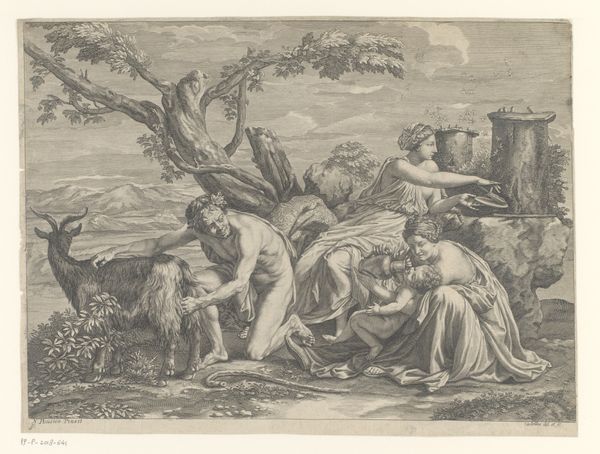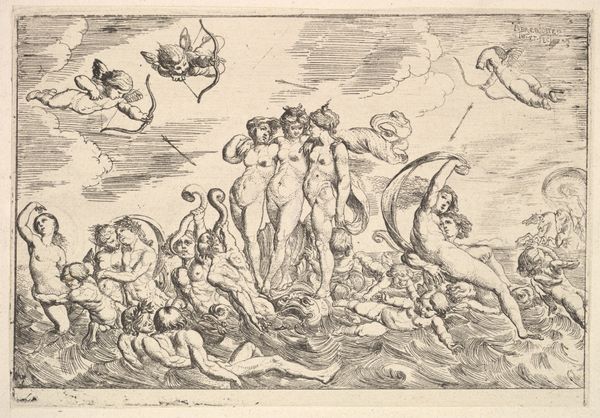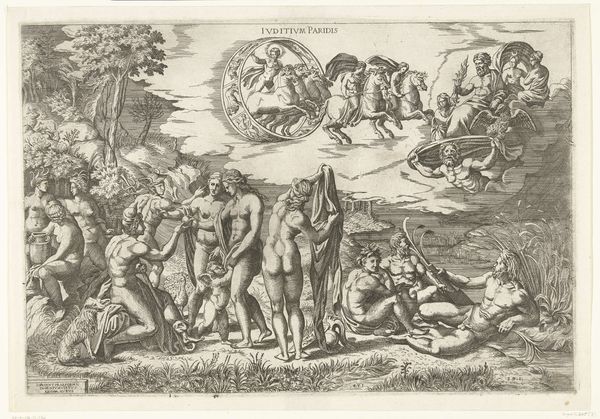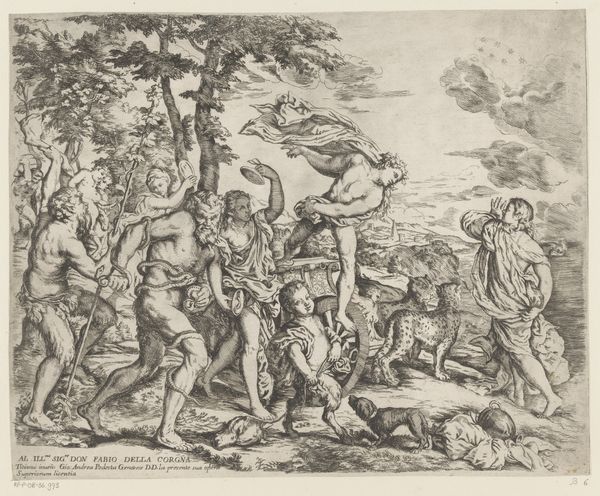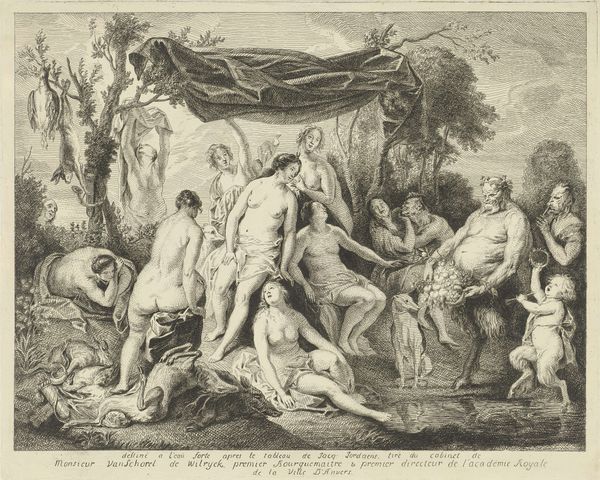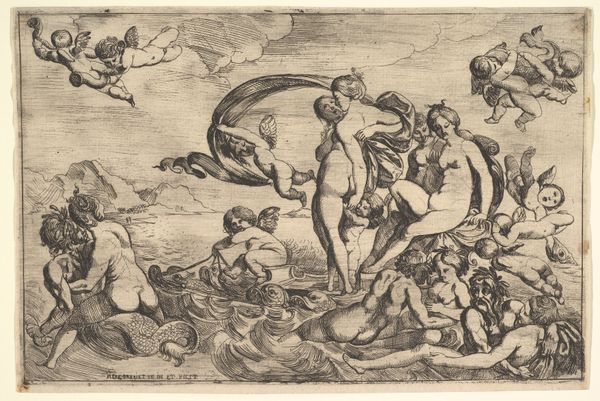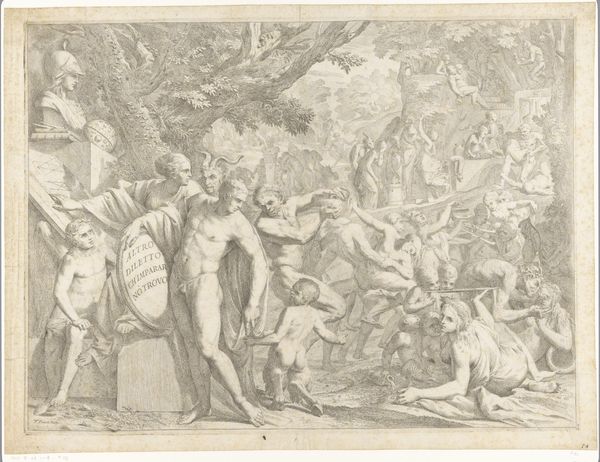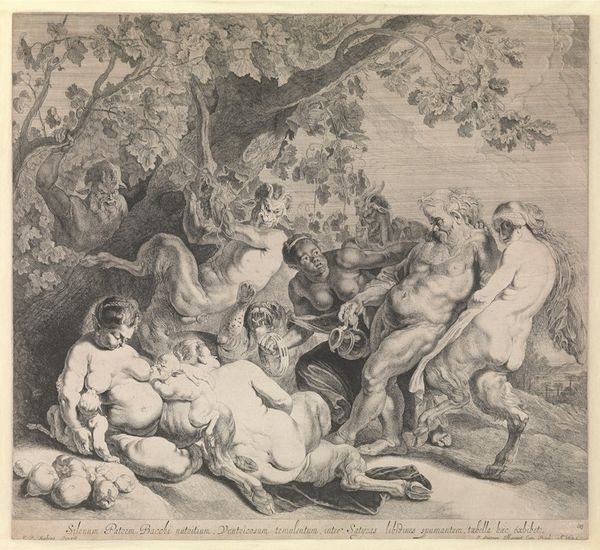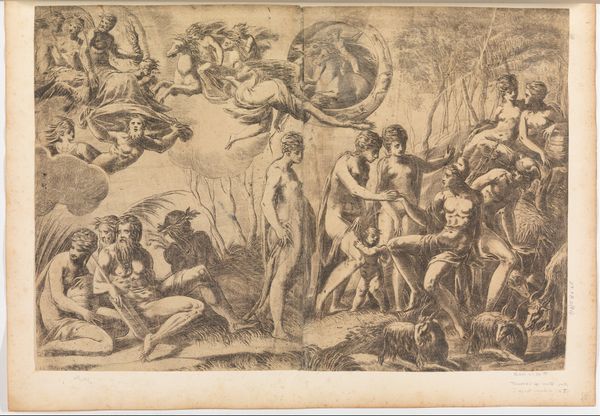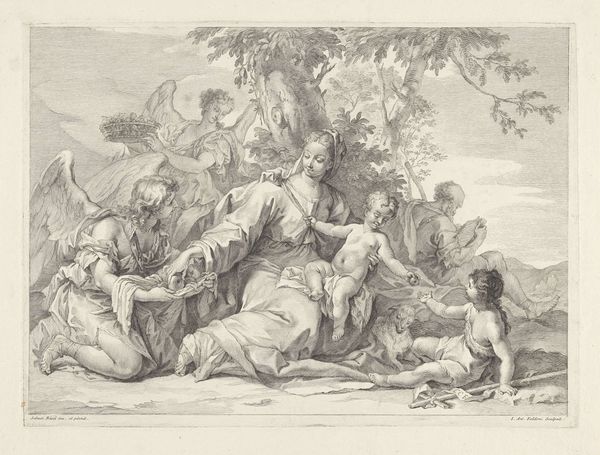
engraving
#
baroque
#
landscape
#
figuration
#
history-painting
#
engraving
Dimensions: height 229 mm, width 302 mm
Copyright: Rijks Museum: Open Domain
Editor: So, this engraving is called "Drinkende bacchanten bij Priapus," created sometime between 1626 and 1665 by Michel Dorigny. It depicts a drunken scene, almost like a chaotic party in a forest. What strikes me is how the figures seem intertwined, both human and mythical. What do you make of it? Curator: I see a concentrated allegory here. Look at Priapus, the fertility god. The Bacchanal, associated with Bacchus, the god of wine, embodies abandon. But consider Priapus: often a figure of ridicule because of his oversized phallus, he is also a protective deity. Is Dorigny hinting at the blurred lines between revelry and consequence? Editor: So the drinking isn't just fun; there's a deeper symbolic warning? Curator: Exactly. The landscape itself plays a role. Note the juxtaposition of the overgrown thicket against the structured architecture. The uninhibited natural world versus civilization's attempt at order. Even the act of drinking carries symbolic weight - a gateway to primal impulses. What purpose does it play when juxtaposed to innocence, such as children holding flowers, juxtaposed to drunkards and satyrs? Editor: That tension between order and chaos is palpable! It's more complex than I initially thought. Curator: Indeed! Every element, from the ivy wreaths to the posture of the figures, builds a multi-layered story that transcends mere partying. There are connections from the physical to the metaphysical! Editor: I didn’t even notice half those things at first. Seeing the historical context and the way symbols repeat really shifts how I understand it. Thank you! Curator: My pleasure. These images have echoes that speak across time, and seeing them means we hear them speak to us.
Comments
No comments
Be the first to comment and join the conversation on the ultimate creative platform.
